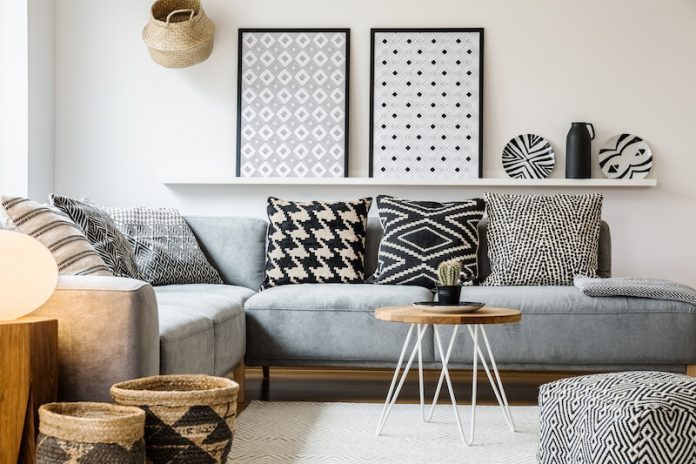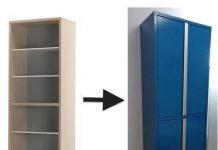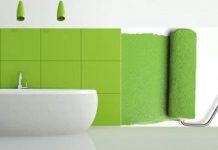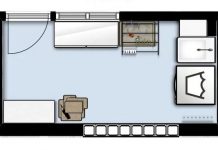
When it comes to painting ceilings, walls or furniture, drips and splashes are inevitable. So that it is not a problem and save time when eliminating them, it is convenient cover and protect before painting. With this practical guide you will learn the type of paper or protective plastic that you should choose so that everything is painting and singing.
The preparation process before painting a room or a piece of furniture is as important as obtaining a good finish, since dust can be generated or the paint can fall on our furniture and floors. Eliminating it once it has dried not only implies having to invest considerable time, but it can also spoil them.
We have all used magazines or newspapers to cover and protect. However, it is not the most appropriate since they are not very absorbent and there may also be a transfer of ink to the freshly painted support or furniture (something that has happened to me on more than one occasion).
The most suitable products to cover and protect before painting are the paper and protective plastic, as well as the plastic covers and the bodybuilder or painter’s tape. In Nerpel they are experts in the manufacture of products to cover and protect and they have a wide assortment in terms of size and qualities.
To find out which one you should use in each case and learn about the most common mistakes, you just have to watch the following video tutorial.
Cover and protect before painting step by step
Before you start with the brush or roller and the paint, you must follow a few steps to protect the room or the perimeter. In this way, when you finish painting you will avoid spending hours cleaning and scratching everything that has stained the paint.
1º.- Remove and clean
When painting a room we will try to make it as clear as possible. To do this, it is recommended to change the room furniture or leave it in the center so that it does not disturb. Once they are all grouped, we will cover them with plastic covers.
The floor and upper edges of moldings, frames and skirting boards must also be cleaned, otherwise the protective tape may not adhere correctly.

2º.- Protect the soil
The next step will be to protect the floor with protective paper, as it absorbs splashes and retains the paint if the bucket spills, for example. It is not convenient to use protective plastic because it breaks easily and the paint can leak. In addition, it is easier to slip and, as it is not absorbent, the paint can spread with footsteps.
The simplest and fastest protective paper to apply is the Double Encintado® as it is extra strong, absorbent and incorporates tape on both sides. In this way, it is not even necessary to bend down to place it because it can be extended by pushing the roll with your foot. It is also ideal for covering and protecting the interior stairs of the house.

When the floor is delicate, such as laminate or wooden flooring, it is advisable to place water repellent protective paper such as HydroStop®. Its main characteristic is that it has an anti-humidity treatment that provides it with great resistance to breakage and trampling, even when wet.
Another option is to place compacted cardboard with a higher density and resistance to rubbing, stepping on, bumps, etc., such as SuperSuelos®, which can also be swept, cleaned and reused several times. However, it is not convenient to use corrugated cardboard since it is made with paper that has been recycled up to six times, making it much less resistant and of inferior quality.

3º.- Cover plugs and small objects
Next, the plugs, thermostats, radiator valves and, in general, all the small elements that are in the walls will be protected. For these elements, the best option is to use bodybuilder’s tape that will be applied around the plug and then glued over the entire surface.
Keep in mind that the edge of the tape must be pressed to seal it and prevent paint from seeping under. You can do this by pressing with your finger or with a spatula.

4º.- Frames, moldings and skirting boards
The next step will be to protect the frames, moldings and baseboards. For this, paper with tape will be used since it is ideal for small vertical surfaces. It is very easy to place by fixing the tape on the upper edge, right at the joint with the wall, and it adheres as we unroll the protective paper. Remember that to fix it correctly the surface must be free of dust and dirt.

5º.- Cover and protect doors and windows
Finally, windows, cabinet doors, radiators, air conditioners and walls will be protected if we are going to paint the ceiling. For this, plastic with tape will be used, which is ideal for large vertical surfaces because it is completely waterproof and allows light to pass through in the case of windows. In addition, on both sides it has a treatment that allows the paint that falls to remain retained in the plastic.
For its placement, you just have to fix the tape and unfold it. As the plastic has an electrostatic effect, it will remain adhered to the surface on which we are placing it.

On the other hand, in the event that we have dismantled a door and we want to have the room isolated, we can use an insulating door that has the following characteristics:
- It is made of a very thick, resistant and insulating plastic.
- It has a double-stitched zipper and a flap on both sides, which allows it to be opened from inside and outside the room.
- It is washable and reusable

Tips for after painting
Once our painting work is finished, all the protections that we have placed will be removed. It is a task that will only take a few minutes, but in which we must take into account the following:
- If the paint has dried on the masking tape, a small cut will be made with a cutter so as not to drag the paint when removing it.
- When pulling the tape do it keeping an angle of 45º.
- Try to take advantage of the protective paper and plastic that has not been stained to reuse it in later works.
- The protective paper of the floor will be collected from the sides towards the center, forming a ball with it.
Finally, remember that once you remove the protective paper you can recycle it so that it has new uses.

I hope with this guide on how to cover and protect before painting avoid staining the area you are going to paint and save time when doing your painting work. Visit to access many more free guides and tricks on DIY and decoration.



